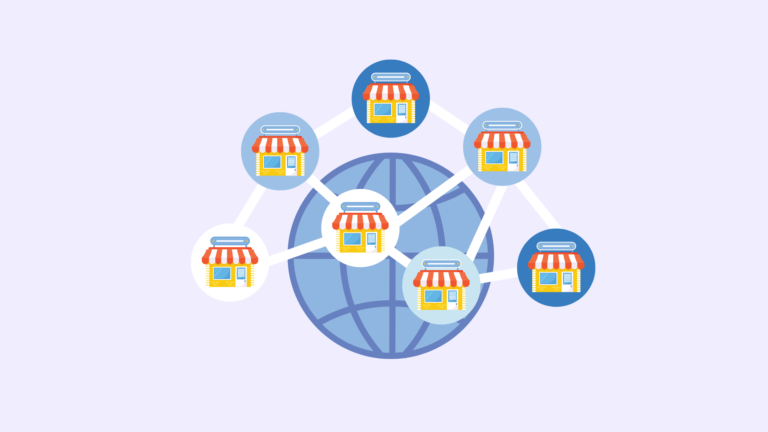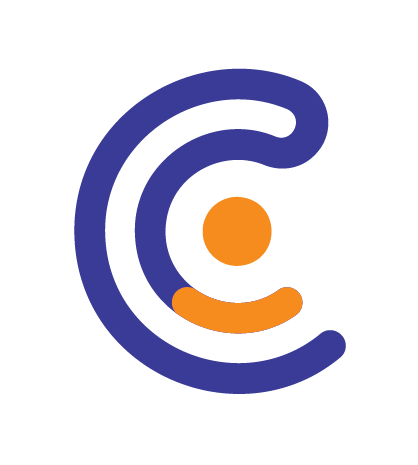In the competitive landscape of SaaS, an effective customer onboarding process is paramount. A well-structured onboarding experience not only helps users understand and utilize your product efficiently but also fosters long-term engagement and loyalty.
Studies reveal that 63% of customers consider the onboarding period when deciding to subscribe to a service or purchase a product. Moreover, companies with a robust onboarding strategy can increase customer retention by up to 50%.
This article delves into the essential components that constitute a successful SaaS customer onboarding experience, ensuring users achieve their ‘aha’ moment swiftly and remain engaged with your product.
Understanding the SaaS Customer Onboarding Process
A well-structured customer onboarding process is a critical factor in the success of any SaaS business. It sets the tone for user engagement, product adoption, and overall customer experience.
A smooth onboarding journey helps new users understand the core features of a product, ensuring they reach their aha moment quickly. According to research, 74% of potential customers will switch to a competitor if the onboarding experience is too complex or confusing.
Why is Onboarding Crucial for SaaS Success?
For SaaS companies, onboarding is the first real interaction users have with the product post-signup. A well-designed user onboarding experience can reduce churn, improve retention, and increase lifetime value (LTV). Companies with strong SaaS onboarding strategies see a 50% improvement in customer retention.
Key Goals of an Effective Onboarding Experience
- Seamless Product Adoption – Help users understand the software intuitively.
- User Engagement & Retention – Ensure users remain active beyond the first interaction.
- Reduced Churn Rate – A well-planned SaaS onboarding strategy prevents early drop-offs.
- Customer Success Enablement – Guide users toward value-driven outcomes quickly.
An optimized SaaS onboarding process ensures users feel confident, supported, and ready to maximize the benefits of the platform
The Impact of a Strong Customer Onboarding Strategy
A well-executed customer onboarding process directly impacts customer retention, reduces churn, and maximizes customer lifetime value (CLV).
Studies show that 86% of users say they would remain loyal to a company that invests in onboarding. When users experience a smooth, value-driven onboarding journey, they are more likely to integrate the product into their daily workflows, leading to long-term engagement.
Retention Rates and Churn Prevention
Customer churn is a major challenge for SaaS companies, with 80% of users abandoning a product within the first week if they don’t understand how to use it.
A structured SaaS onboarding strategy helps users achieve early wins, making them more likely to stay engaged. Personalized onboarding, interactive product tours, and proactive customer support can increase retention rates by up to 50%.
How Onboarding Influences Customer Lifetime Value (CLV)
A seamless user onboarding experience ensures customers experience value quickly, leading to higher engagement, upsells, and renewals. Companies that focus on customer success during onboarding see a significant boost in CLV and revenue growth.
By guiding users through a frictionless onboarding journey, businesses can transform new signups into loyal, long-term customers.
Key Elements of an Effective SaaS Customer Onboarding Process
An optimized customer onboarding process ensures new users quickly understand and extract value from a SaaS product.
A frictionless and engaging onboarding experience enhances customer satisfaction, improves retention rates, and reduces churn. Below are the essential components of a high-converting SaaS onboarding strategy.
Simplified Sign-Up and Frictionless Access
The first step to a successful SaaS onboarding experience is an effortless sign-up process. Complex forms, unnecessary fields, or requiring credit card details upfront can deter users.
Studies show that reducing form fields from 11 to 4 can increase conversion rates by 120%. Ensuring single sign-on (SSO) and social login options can further improve accessibility.
Personalized Onboarding Experiences
A one-size-fits-all approach doesn’t work in SaaS onboarding. Personalized onboarding flows, based on user roles, business needs, or past behaviors, enhance engagement.
Tailored recommendations, dynamic checklists, and in-app messaging help guide users effectively. 80% of customers are more likely to engage with a brand that offers personalized experiences.
Guided Product Tours and Walkthroughs
New users often struggle with software adoption, leading to frustration and drop-offs. Interactive product tours, tooltips, and step-by-step walkthroughs help users navigate the software effortlessly.
Leveraging in-app guidance ensures users understand key features without feeling overwhelmed, improving time-to-value (TTV).
Goal-Based Onboarding Sequences
A well-structured SaaS onboarding strategy should focus on goal completion rather than just product education. Setting clear milestones, such as completing profile setup, integrating with other tools, or achieving the first success metric, keeps users motivated. Companies using goal-oriented onboarding see a 2x increase in feature adoption.
Creating a Winning SaaS Onboarding Checklist
A structured customer onboarding process ensures users can quickly and effectively start using a SaaS product without confusion. A well-crafted onboarding checklist streamlines the process, guiding users through essential steps while increasing engagement and retention. Below is a step-by-step guide to creating a winning SaaS onboarding checklist.
Step-by-Step Guide for a Seamless User Experience
✔ Welcome Email & Account Confirmation – Send a personalized welcome email with login details, quick-start resources, and next steps. Onboarding emails have an open rate of 45%, higher than regular marketing emails.
✔ Easy Product Sign-In & Setup – Ensure seamless access with SSO, Google login, or passwordless authentication. Remove unnecessary steps to minimize friction.
✔ Interactive Product Tour & Walkthroughs – Provide an in-app guided tour highlighting key features to help users navigate the product intuitively. 72% of users prefer self-service onboarding with guided prompts.
✔ Customization & Personalization – Allow users to set preferences, select goals, or configure settings based on their business needs for a tailored experience.
✔ Quick Wins & Success Milestones – Encourage users to complete simple tasks that demonstrate value early, such as importing data, creating their first project, or integrating with other tools.
✔ Proactive Customer Support & Help Center – Offer live chat, knowledge base articles, and FAQs to assist users in real time. Self-service resources reduce support tickets by up to 40%.
✔ Progress Tracking & Onboarding Checklist Completion – Provide a visible progress bar or checklist so users know their next steps and stay engaged.
Best Practices to Ensure User Success
✅ Keep onboarding simple – Avoid overwhelming users with too many steps or excessive information.
✅ Use behavioral triggers – Implement automated emails and in-app nudges to remind users to complete essential actions.
✅ Monitor user behavior – Use analytics tools to track onboarding drop-off points and optimize the journey.
✅ Gather user feedback – Collect insights through in-app surveys or check-ins to continuously improve the SaaS onboarding experience.
A winning SaaS onboarding checklist ensures new users move from sign-up to activation seamlessly, leading to higher retention, lower churn, and long-term customer success.
Common SaaS Onboarding Mistakes to Avoid
Even the best SaaS onboarding process can fail if common pitfalls are overlooked. Many businesses lose potential customers due to unnecessary friction, lack of engagement, or poor guidance. Avoiding these mistakes can significantly improve customer retention and satisfaction.
Overcomplicating the Onboarding Journey
A long, complex onboarding experience overwhelms users, leading to frustration and higher churn.
Studies show that 80% of users abandon a product if they don’t understand how it works within the first few minutes. Keep the process simple, prioritize essential steps, and introduce advanced features gradually.
Lack of Personalization and User Engagement
A generic, one-size-fits-all customer onboarding strategy often fails to address different user needs. 75% of users expect a personalized experience, including tailored recommendations, role-based onboarding, and dynamic checklists.
Engaging users with interactive content, in-app prompts, and proactive support significantly improves activation rates.
Measuring the Success of Your Onboarding Process
Tracking the right onboarding metrics helps businesses optimize their SaaS onboarding strategy and improve customer success rates.
Key Metrics to Track Onboarding Efficiency
📌 Time-to-Value (TTV) – Measures how quickly users reach their first meaningful success with the product. Lower TTV = better retention.
📌 Activation Rate – Tracks the percentage of users who complete key onboarding steps. Products with a 60%+ activation rate have higher long-term retention.
📌 Churn Rate During Onboarding – Identifies where users drop off, helping businesses refine their onboarding flow.
📌 Feature Adoption Rate – Indicates how many users engage with core product features, revealing onboarding effectiveness.
Tools to Analyze User Behavior and Feedback
- Product Analytics (e.g., Mixpanel, Amplitude) – Tracks in-app behavior and identifies friction points.
- Heatmaps & Session Recordings (e.g., Hotjar, FullStory) – Shows where users struggle during onboarding.
- Customer Feedback Surveys (e.g., CustomerCrux, NPS surveys) – Gathers insights to improve user experience.
How to Continuously Improve Your Onboarding Process
An effective SaaS onboarding process is never static—it requires constant iteration based on data, user behavior, and feedback.
A/B Testing for Better Onboarding Flows
Experiment with different onboarding sequences, CTA placements, messaging, and tutorial formats to determine what works best. A/B testing has been shown to improve conversion rates by up to 30%.
Gathering and Acting on Customer Feedback
Use in-app surveys, customer interviews, and support tickets to identify pain points. Businesses that actively implement user feedback into their onboarding see a 20% improvement in customer retention.
A data-driven, user-centric onboarding process ensures long-term customer success, satisfaction, and loyalty.
Building a Seamless SaaS Onboarding Experience
Building a seamless SaaS onboarding experience is crucial for long-term customer retention and satisfaction. A smooth, engaging onboarding process ensures users quickly understand the value of your product, driving higher activation rates, lowering churn, and ultimately increasing customer lifetime value.
To achieve this, focus on keeping the experience simple and frictionless, minimizing unnecessary steps during sign-up and ensuring seamless access. Personalization is key—tailoring the journey based on user roles, goals, and preferences enhances engagement. Providing guided product tours and interactive tutorials will help users adopt key features faster.
Tracking success through key metrics like activation rates, time-to-value (TTV), and churn allows you to continuously optimize your strategy. Regularly collecting and acting on customer feedback through A/B testing, heatmaps, and user surveys ensures your onboarding process evolves with your users’ needs.
A well-executed SaaS onboarding strategy not only introduces users to the product but also builds trust and fosters long-term loyalty.




